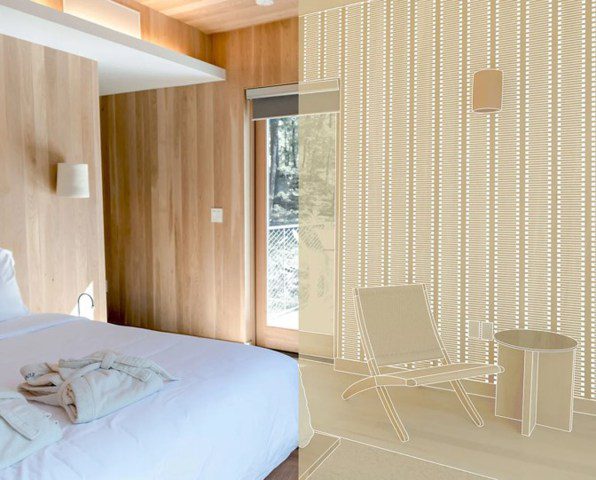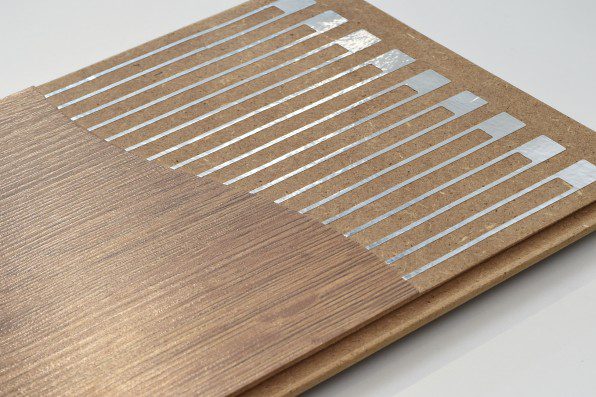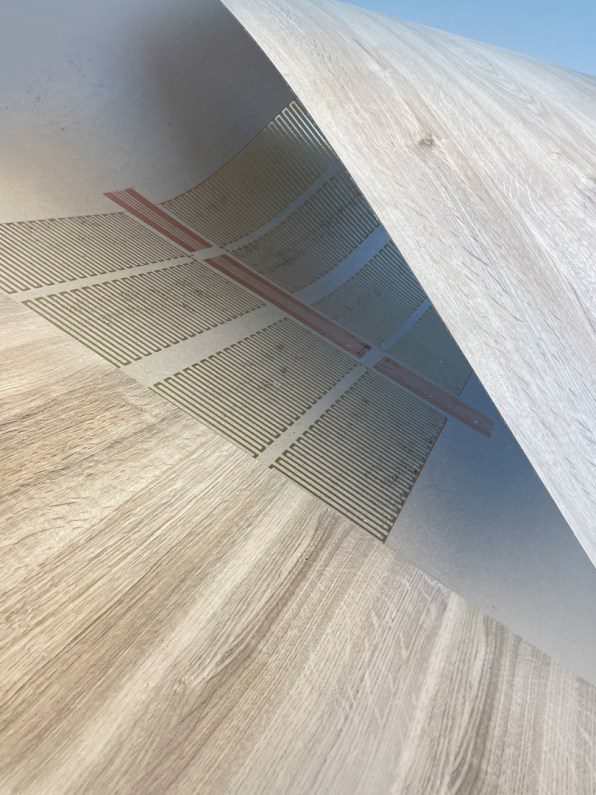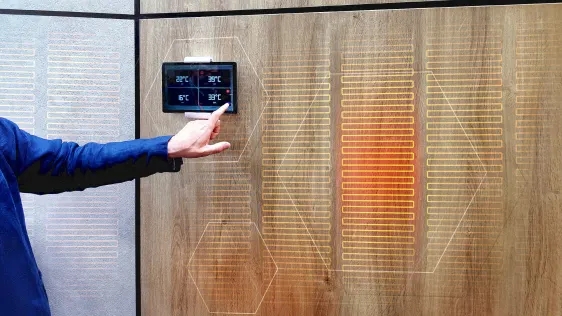We're all familiar with laminate, that thin layer of wood that covers our furniture and floors. What if I told you that it can now turn into eco-friendly and super efficient heating?
A metallic “film”.
Finnish startup Warming Surfaces Company developed a metal mesh, almost a film, thin enough to be hidden in an ordinary piece of laminate. The product, called halia, can transform furniture or walls into real radiators with low energy consumption.
This ingenious invention comes from a research center project Moutain Biking, run by the Finnish government, which has been working on flexible printed electronics for twenty years. Initially, the intent was to create fake targets for the Finnish army, to deceive enemies with false “thermal images” of tanks.
During the design phase, however, the researchers realized the enormous potential of this technology also for heating homes and offices.

From pitched battles to home furnishings
I don't know if I was clear enough: these "film radiators", less than a millimeter thick, can be embedded in any material, even fabrics. With their ability to cover large areas, they heat rooms almost instantly. Connected to sensors or home automation systems, they can activate heat "on demand" and only in the quantity needed.
“In summary, your furnishings detect your presence in the room and adjust the temperature to your preferred level in a few tens of seconds. It's not as immediate as turning on a light, but it's very close,” he says Jani-Mikael Kuusisto, co-founder of the startup.


Surface radiators: the next steps
The Finnish company is working with a Portuguese laminate manufacturer and a construction company to test new products incorporating the technology. The first products will be on the market by 2024.
Kuusisto hopes this technology can help reduce carbon emissions from buildings. And it would be a good and right thing: in Europe, almost two thirds of the energy used by families is used for heating.
Today, thanks to a paper-thin sheet of metal, the energy efficiency and innovation of radiator 2.0 could be just beneath the surface of the next piece of furniture or wall we're touching.


